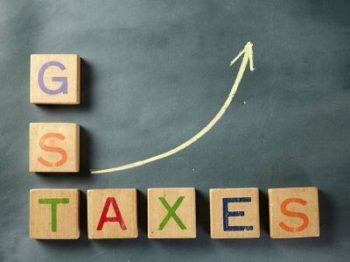The initiative is likely to unveil in from October after a centralised software platform is ready, a top official said.
The provision, called the e-way bill, would be implemented after required infrastructure for smooth generation of registration and its verification through hand-held devices with tax officials are in place.
Reportedly, the information technology platform for the e-way bill system is getting developed by the National Informatics Centre (NIC) along with GST-Network (GSTN), the company that has developed the IT backbone for the new indirect tax regime.
The Centre has also decided to ease up the timeline provision under which the e-way bill generated by GSTN for 20 days for goods travelling more than 1,000 km. Earlier, this was 15 days.
As per the yet to be launched provision, GSTN would generate e-way bills that will be valid for 1-20 days, depending on the distance to be travelled — one day for 100 km, 3 days (100 to less than 300 km), 5 days (300-less than 500 km) and 10 days (500-less than 1,000 km).
For certain selected categories of goods, the GST Commissioner may extend the validity period of the e-way bill.
“We hope the e-way bill can be implemented in three months time as by then, we hope to develop the infrastructure for the consolidated e-way bill,” a top official said.
Since states like West Bengal, Kerala, Bihar, Odisha and Andhra Pradesh already has a well-functioning e-way bill system, the GST Council in its meeting last month has allowed the states having e-way bill rules to continue with the existing set up till a central format gets ready.
Originally, GSTN was supposed to develop the e-way bill platform, but last month only the GST Council decided to rope in NIC to develop it since it was felt that in the initial days of GST launch, GSTN would be busy with other works like solving issues like registration and invoice generation.
The draft e-way bill rules were made public in April. As per the excerpts, it suggests that the person-in-charge of conveyance will be required to carry the invoice or bill of supply or delivery challan, and a copy of the e-way bill or the e-way bill number, either physically or mapped to a Radio Frequency Identification Device (RFID) embedded onto the conveyance.
The rules give authority to the tax commissioner or an officer empowered by him on his behalf to intercept any conveyance to verify the e-way bill or the number in physical form for all interstate and intra-state movement of goods.
Elets The Banking and Finance Post Magazine has carved out a niche for itself in the crowded market with exclusive & unique content. Get in-depth insights on trend-setting innovations & transformation in the BFSI sector. Best offers for Print + Digital issues! Subscribe here➔ www.eletsonline.com/subscription/






















